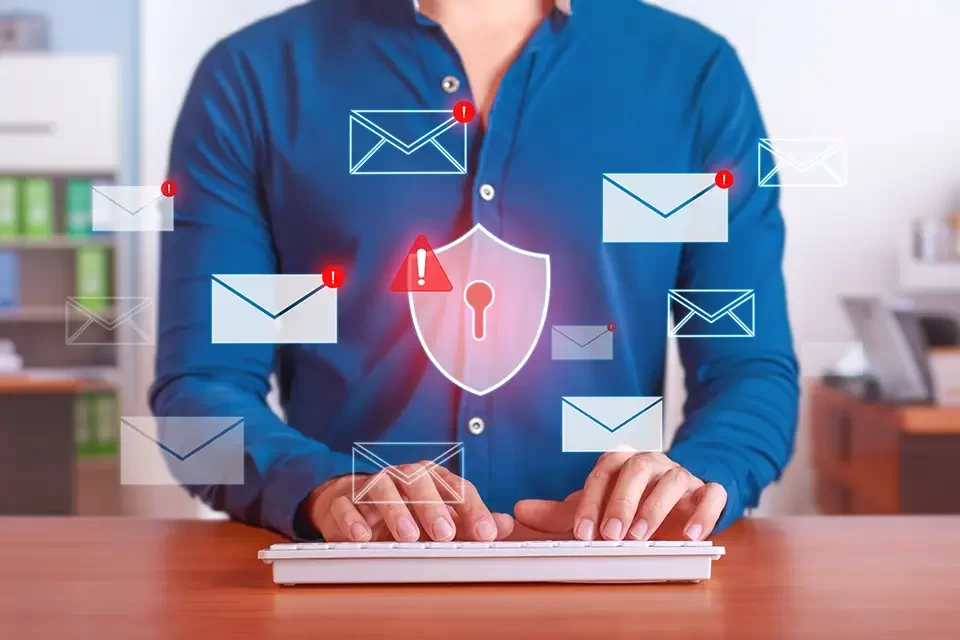Even though the internet has brought us into a golden age of digital communication, it’s hard to believe that we still have to deal with scams and shady schemes every day. Take, for example, emails. We’ve used them at home and in businesses for over 20 years. By now, we’d all be able to spot the signs and red flags that could mean something bad is going to happen, or someone is trying to do something bad. This isn’t true. But this guide on how to use email safely should help people, groups, employers, and employees stay safe when communicating by email.
Here Are Some Tips to Stay Safe While Using Emails
1. Don't Open Emails from People You Don't Know
Most of the real emails we get will come from people we know. Such as family members, friends, companies we’ve done business with, or charities we’ve given money to before. If the person getting the email doesn’t know who sent it, that’s the first red flag. Some emails from strangers will be welcome, but be wary of emails from people you don’t know. Not only will some email addresses and sender names be unknown, but the subject lines will also look strange.
2. Don't Open Email Attachments You Didn't Expect
Email attachments are a common way for viruses and malware to spread. So the best thing to do is ignore attachments unless we know they’re safe. Here are some situations in which attachments may be real:
- When a friend says they will send us a file or picture,
- When a company sends a bill or receipt that is regular or expected,
- When a company sends a newsletter or brochure that you asked for
The main question is whether or not an attachment is expected. Even if the email is from a real friend, if their account has been hacked or compromised, it could have dangerous attachments. Don’t think an attachment is safe just because you know the person who sent it to you. If you have second thoughts, don’t open them.
3. Don't Click on Links in Emails
Links are another way that leads people to sites where their information could be stolen or malware could be put on their computers. Many real businesses go out of their way to make sure customers know their emails are real. So, even if they put links in the emails, you can always find the information linked by going straight to the website. If a friend or family member sends us an email with a link, we should ask ourselves if they usually send us links and if the email as a whole looks safe.

4. Use the Folder for Spam
Every email service has a spam folder where unwanted or possibly dangerous emails can be sent or where the user can move them. If we get an email that we think isn’t real, moving it to the spam folder will help stop future emails from the same sender from getting to our inboxes.
Spam filters can also learn from what we do. So, if we moved an email with the subject line “Hello, did you get my last email?” to the spam folder, the system might decide to send any future emails with suspicious subject lines straight to the spam folder. It also works for email addresses. So if a spammer is bothering us a lot, we can stop them from showing up in our inbox by moving their emails to the spam folder.
5. Keep Your Email Passwords Safe
Strong passwords are one of the best ways to keep hackers out, and the password for our email account should be the strongest of all. Because it could give hackers access to so much more information. If we use public computers, like those in libraries, to check our email, we should change the passwords often, just in case. Because so many people use these public computers, they are more likely to be hacked. Change your passwords usually to keep yourself safe.
A good password may be hard for other people to figure out. Don’t use the names of your family members, your birthday, your favourite foods, or anything else that someone who knows you could use to get into your accounts.
6. When Using Open Wi-Fi, Be Careful with Your Email
Public Wi-Fi and Wi-Fi hotspots are great ways to get online, but they can pose security risks. To keep our email accounts safe, we shouldn’t sign in to them over unsecured wi-fi. Just in case someone nearby decides to hack into our account and get our personal information.
Scammers take advantage of the fact that we’re all busy and don’t always pay attention to the small signs that an email might be fake. If you need more clarification on an email, the best thing to do is delete it right away. We need to know for sure that an email is real. Or we could put our computers or even our bank accounts at risk. Call us today so we can promise a safe and secure experience on the internet for you. We are based in Richmond Hill, Toronto.
